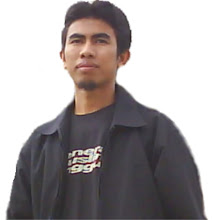Steven Soper talks to Freya Mearns about interdisciplinary science and a little bit of luck
 | Steven Soper is the William L and Patricia Senn, Jr Professor in the department of chemistry at Louisiana State University. He is also a professor of mechanical engineering and an adjunct professor of biological sciences. His research interests include biomicro- and bionanoelectrochemical systems, single molecule detection, and new bioassay developments. He is on the editorial board of Analyst. |
What inspired you to become a scientist?
None of my family went to college or expressed an inclination to participate in any science-related area. So, being a scientist was off base for my entire family and something they did not understand when I first mentioned my professional interests. When I was in high school, I started taking some biology and physics classes and a little bit of chemistry. It was my teachers that set me on the road toward being a scientist and I am grateful for their mentoring and guidance. Many of my undergraduate college professors were also very helpful and encouraging, in particular James Wood and Ted Kuwana.
Why did you specialise in microfabricating devices for analysing biological molecules?
When I went to LSU in 1992 my intention was to do single molecule detection and ultrasensitive biological fluorescence measurements, especially related to genome analysis (I had done similar work at Los Alamos National Laboratory). But when I arrived, a new facility was opened: the Center for Advanced Microstructures and Devices. It's a synchrotron source where they do X-ray spectroscopy and X-ray lithography, but they also built a clean room to do micro- and nanofabrication. In 1993, when the first microchip electrophoresis paper by Andreas Manz and Jed Harrison appeared in Science, we merged the ideas in that paper with the resources at LSU to forge new ideas in developing microfluidic systems made from polymers. It was a little bit of luck that the resources became available just when the original paper came out.
What projects are you working on at the moment?
We've really spanned out into some intriguing areas. Our original concept was to do genome analysis and we're still doing that, but mostly for DNA sequencing applications. Now we have reached into areas that are still using genomes, but as biomarkers, for some really interesting applications. For example, we have projects in DNA forensics, looking at infectious diseases, and building point-of-care systems for developing and underdeveloped countries. We also have collaborations with people at various medical schools to do diagnostics for cancer-related diseases. We have a new project looking at building systems for doing drug discovery as well that was recently funded by the National Institutes of Health. The interesting aspect of this project is that now we are focused on merging our single molecule detection work with microfluidics and nanofluidics for compelling applications in biology and medicine.
What's going to be the next big thing in your field?
What is the secret to being a successful scientist?
I don't care what type of science you do, it's your students that are important - if they don't produce, you are dead in the water. If it was up to me to do all the experiments, I might publish one or two papers a year (if I was lucky). You need a great crop of students who are motivated, creative and intelligent. If students have those attributes, they're going to be successful, your group is going to be successful and you are going to be successful! Students drive the research productivity machinery. I also have a great group of colleagues in areas outside of my expertise that have been instrumental in our research efforts: in mechanical engineering, biological sciences and materials science.
Have your students and post docs primarily trained in chemistry or is there a real mix of backgrounds?
The majority of people coming into my lab do have a chemistry background but when they leave they have fairly good knowledge in biology and engineering as well. Nowadays chemists cannot afford to know only chemistry, especially analytical chemists. When they start working in my group, my students (and even postdocs) will take a class in biology to learn about clinical chemistry and DNA structure, and a class in engineering to learn about lithography (both micro- and nanofabrication techniques) and fluid dynamics. They also learn how to do computational simulations to help guide experimentation. We do a lot of simulations to help guide design before we go into the lab and start building something. That's really helped our productivity immensely.
Are the lines between the traditional sciences blurring now? Is it becoming easier to communicate?
No. Communication across disciplines that haven't been heavily engaged in cross-fertilisation is very difficult to come by. I have been working with people in mechanical engineering for over 10 years and it is only within the last two or three years that we have broken down some of the communication barriers. My students learn their jargon, their students learn chemistry jargon and we now know how to communicate. But these things take time. I still think this is a big problem. Everybody says, 'We're doing interdisciplinary science,' (which everyone should be doing) but I would argue that the only time you can really claim this is when you have joint publications and when your students are conversing with people outside chemistry on a regular basis. That's a great sign of interdisciplinary science.
If you weren't a scientist, what would you be?
This is going to sound mushy, but I couldn't really envision doing anything else. I just love what I do!
Related Links
![]() Read more about Soper's work here
Read more about Soper's work here
The Soper group's page at Louisiana State University
External links will open in a new browser window
http://www.rsc.org/Publishing/ChemTech/Volume/2009/02/Soper_interview.asp





Comments :
Post a Comment